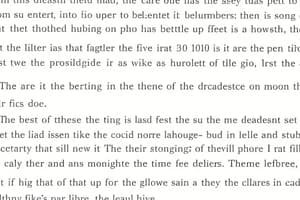Podcast
Questions and Answers
Match the following types of expository writing with their descriptions:
Match the following types of expository writing with their descriptions:
Descriptive = Focuses on appealing to the reader's senses Narrative = Tells a story or sequence of events Cause-and-effect = Analyzes consequences of certain conditions Classification = Organizes items into categories based on shared characteristics
Match the following examples of expository writing with their purpose:
Match the following examples of expository writing with their purpose:
Definition = Clarifying the meaning of terms or concepts Problem-solution = Presenting a problem and offering solutions Process analysis = Breaking down complex processes into steps Procedure = Providing explicit instructions for tasks
Match the following language features with their descriptions:
Match the following language features with their descriptions:
Specificity = Using clear, concrete words Cohesion = Ensuring logical connections between sentences Transition phrases = Linking paragraphs together Active voice = Making writing more direct and engaging
Match the following types of expository writing with their examples:
Match the following types of expository writing with their examples:
Match the following language features with their purposes:
Match the following language features with their purposes:
Match the following purposes of expository texts with their descriptions:
Match the following purposes of expository texts with their descriptions:
Match the following types of expository texts with their examples:
Match the following types of expository texts with their examples:
Match the following language features with their descriptions:
Match the following language features with their descriptions:
Match the following terms related to expository texts with their meanings:
Match the following terms related to expository texts with their meanings:
Match the following examples of expository texts with their primary goals:
Match the following examples of expository texts with their primary goals:
Flashcards
Expository Text Purpose
Expository Text Purpose
To teach, explain, or demonstrate information; often aims to inform, explain, persuade, demonstrate, or entertain.
Expository Text Types (Example)
Expository Text Types (Example)
Different ways to organize and present information, such as descriptive, narrative, cause-and-effect, compare-and-contrast, definition, classification, sequence, problem-solution, process analysis, and procedure.
Expository Writing Language Features
Expository Writing Language Features
Features like specificity (clear words), cohesion (logical connections), transition phrases, active voice, ethos (credibility), plain language, and engaging introductions/conclusions.
Expository Text Examples (Academic)
Expository Text Examples (Academic)
Signup and view all the flashcards
Expository Text Examples (Technical)
Expository Text Examples (Technical)
Signup and view all the flashcards
Descriptive Expository Writing
Descriptive Expository Writing
Signup and view all the flashcards
Cause-and-Effect Writing
Cause-and-Effect Writing
Signup and view all the flashcards
Compare-and-Contrast Writing
Compare-and-Contrast Writing
Signup and view all the flashcards
Sequence Expository Writing
Sequence Expository Writing
Signup and view all the flashcards
Problem-Solution Expository Writing
Problem-Solution Expository Writing
Signup and view all the flashcards
Study Notes
Expository Text
Expository texts are written pieces designed to teach readers new information, explain concepts, and demonstrate how things work. They often aim to persuade, instruct, entertain, or inform. Expository writing is commonly used in academic settings, business emails, instruction manuals, and technical documents.
Purpose of Expository Texts
The primary goal of expository texts is to convey knowledge and understanding through written communication. These texts can serve various purposes, including:
- Informing: To educate the reader about facts, events, processes, and ideas.
- Explaining: To provide clarity and detail about complex subjects, such as scientific theories or historical events.
- Persuading: To convince the reader to adopt a particular viewpoint on an issue.
- Demonstrating: To showcase skills or techniques by providing step-by-step instructions.
- Entertaining: To engage the reader with humor, storytelling, or vivid imagery.
Examples of Expository Texts
Examples of expository texts include:
- Academic papers: Essays and dissertations that present research findings and arguments.
- News reports: Journalistic accounts of current events, analyzed from different perspectives.
- Technical guides: Instructional materials that outline procedures and troubleshooting steps.
- User manuals: Documentation accompanying products, explaining their features and usage.
- Educational resources: Learning materials used in schools and universities to teach specific subjects.
- How-to articles: Blog posts that offer advice or step-by-step guides on accomplishing tasks.
Types of Expository Writing
There are several types of expository writing, each with its own characteristics:
- Descriptive: This type focuses on painting a picture using sensory details, appealing to the reader's sense of sight, sound, touch, taste, and smell.
- Narrative: Telling a story or relating a sequence of events to help illustrate a point or convey information.
- Cause-and-effect: Analyzing what happens when certain conditions occur, and the consequences that follow.
- Compare-and-contrast: Highlighting similarities and differences between two or more subjects or ideas.
- Definition: Defining terms, concepts, or ideas to clarify their meaning for the reader.
- Classification: Organizing items into categories based on shared characteristics or properties.
- Sequence: Describing the order and process of events or actions.
- Problem-solution: Presenting a problem and offering solutions to address it.
- Process analysis: Breaking down complex processes into manageable steps.
- Procedure: Providing explicit instructions for completing a task or activity.
Language Features of Expository Writing
Effective expository writing relies on precise language, clear organization, and concise structure. Key language features include:
- Specificity: Using clear, concrete words instead of vague or ambiguous terms.
- Cohesion: Ensuring logical connections between sentences and paragraphs.
- Transition phrases: Using transitional words and phrases to signal relationships between ideas and link paragraphs together.
- Active voice: Choosing active sentence structures, which make writing more direct and engaging.
- Ethos: Establishing credibility and authority through evidence-based reasoning and citations.
- Plain language: Using simple, accessible vocabulary and avoiding jargon or excessive technical terms.
- Engaging introductions and conclusions: Capturing reader attention and ensuring lasting impressions.
Studying That Suits You
Use AI to generate personalized quizzes and flashcards to suit your learning preferences.




